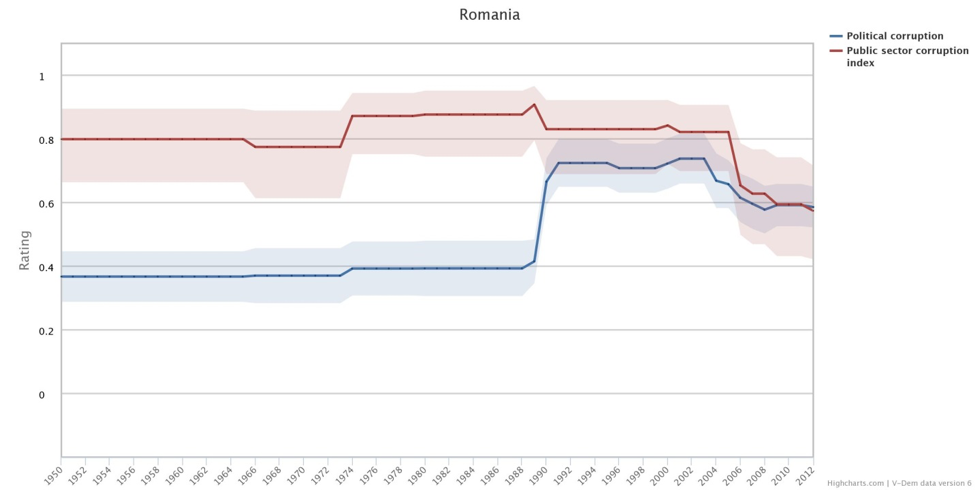Corruption in Romania
By: V-Dem Staff
Mar 06, 2017
Following the adoption of the law, hundreds of thousands citizens protested in the streets and the bill was repealed. However, protests have continued and it is still unclear if the Government will abandon the law. This week’s graph takes a look at the development of political corruption and public sector corruption in Romania over time.
By using V-Dem’s Country Graph Tool we can compare the development of the Political Corruption Index and the Public Sector Corruption Index. The Political Corruption Index measures several distinct types of corruption, including ‘petty’ and ‘grand’; both bribery and theft; both corruption aimed at influencing lawmaking and affecting implementation. The Public Sector Corruption Index measures to what extent public sector employees grant favors in exchange for bribes, kickbacks, or other material inducements and how often they steal, embezzle, or misappropriate public funds or other state resources for personal or family use. Both corruption indices run from less corrupt to more corrupt.
After the fall of Soviet Union in 1991 the Political Corruption Index rises steeply in Romania. In contrast, the Public Sector Corruption Index slightly decreased after the fall of the Soviet Union and stabilized around the same level until 2005 when it took a downward turn around the time of preparations for joining the EU in 2007. As reflected in the current protests, corruption remains on a relatively high level on the Index. Data for the corruption indices until 2016 will be available this spring with the next V-Dem data update.
To learn more about corruption in Romania, or in any other country, use the V-Dem Online Analysis Tool on v-dem.net.


